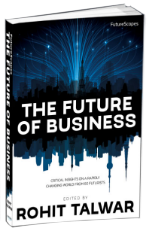29 Jun The Curious Absence of Next Generation Greeting Cards
Last week I was standing dumbfounded at the CVS’ greeting card isle trying to look for a Father’s Day card for my husband. None of us are very conventional, and the typical pre-authored Hallmark card has rarely satisfied my somewhat snooty European taste. Somehow Hallmark seems to be in competition with ToysRUs’ gender segregated pink and blue isles, a puzzling choice in a time when gender binaries are under public debate. Don’t get me wrong, there still is a measurable market for inside the box greeting cards, but when Target can only display four same-sex marriage cards on their isles I can’t help think a lot of brick-and-mortar stores are missing out on a great opportunity. With the LGBT market being $830 billion strong and over 80% of Generation Z sympathizing with the right to marry, failing to notice this market is clearly not very foresighted.
So there I was trying to choose between religious (read: Christian) cards and sticky-sweet clichéish love confession on the one hand (isn’t is ironic we rely on professional wordsmiths to express our most personal, intimate feelings?). On the other end of the scale are “masculine” themes offering unfunny fart-jokes, mancaves with beer bottles, toolboxes, baseballs and curvy blondes. I ended up buying a blank, non-seasonal happy-face card and scratched down a quick “Happy Fathers Day” with my own sloppy handwriting.
What first hit me during these 20 minutes of indecision at the card isle was how unprepared Hallmark etc. are to meet a younger generation whose only motivation to buy these cards are the grandmas who like to receive them. The thought occurred to me that younger people don’t buy physical cards anymore but send e-cards instead. That may be true for as long as they don’t buy many physical gifts. But Millennials are now entering the life phase of gifting, and you just can’t send an e-card to go with flowers, housewarming, babyshower or graduation gifts.
My second thought was how little they have to offer the LGBT community. Having no inkling of the Supreme Court’s imminent decision at the time, I remember thinking about what opportunities companies like Hallmark and CVS would miss out on if the state bans on same-sex marriages were overruled. And here we are one week later with businesses of all colors (excuse the pun) wrapping their logos in the rainbow flag in celebration of universal same sex marriage – or at least to show they are on the right side of the divide. Isn’t it a bit puzzling that the businesses who hold the megaphones for voicing public values fail to champion this cause? Yes, I’m aware that companies like Hallmark are joining brands like Honey Maid, Starbucks, Tiffany & Co., Nikon, Marriott and Banana Republic in campaigning for LGBT inclusion. But their online strategies and the selection provided in brick-and-mortar stores are gaping mismatches, even here in progressive Austin.
So are the vendors the problem? Not really. Target, Walmart and Walgreens are all supportive and indicate a clear wish to attract younger consumers, the LGBT community and express more contemporary values. Maybe more same-sex wedding accessories, including cards will be rolled out in the year to come? And maybe we will see fewer Fathers Day cards like this:



Sorry, the comment form is closed at this time.